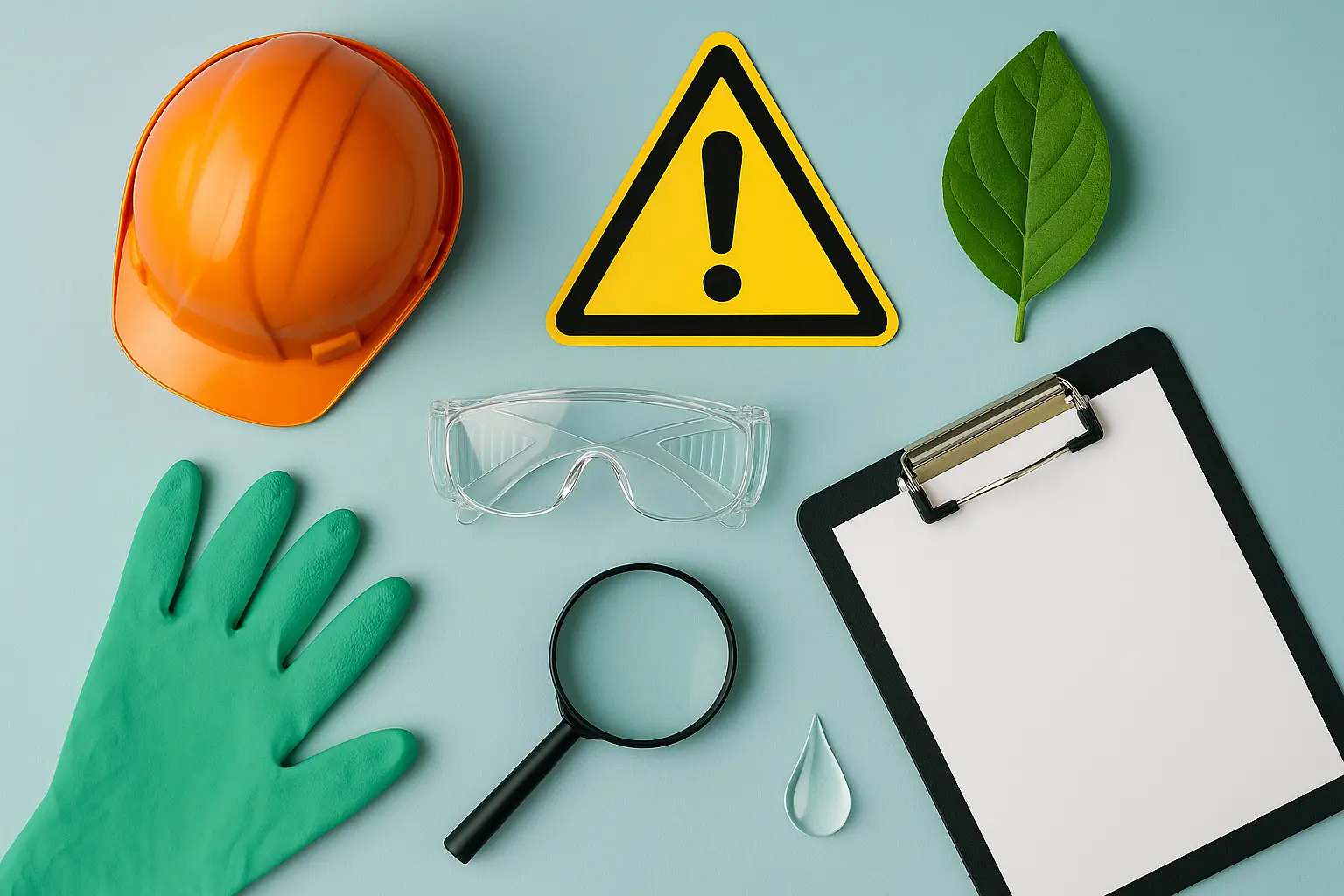EN 374 Protective Gloves Chemical Certification
The EN 374 standard is designed to ensure that protective gloves provide adequate protection against chemicals in various working environments. Compliance with this European standard is mandatory for any organization dealing with hazardous substances, especially those involved in the chemical industry or handling dangerous materials.
Protective gloves are evaluated under three classes based on their resistance to different types of chemicals: Class 1 (limited), Class 2 (medium), and Class 3 (high). The standard specifies both static and dynamic tests for determining glove performance. Static testing assesses the integrity of the material when exposed to a chemical, while dynamic testing evaluates how well the material can withstand repeated exposure over time.
The EN 374 certification is crucial for maintaining occupational health and safety standards in industries such as manufacturing, healthcare, and laboratory settings where workers may come into contact with harmful chemicals. It ensures that personnel are adequately protected against chemical hazards by selecting gloves that meet the required resistance levels for specific chemicals.
The standard covers a wide range of chemicals including acids, bases, organic solvents, and other corrosive substances commonly found in industrial applications. By ensuring compliance with EN 374, organizations can demonstrate their commitment to worker safety and regulatory requirements.
Before undergoing testing, it is essential to identify the specific chemicals that will be encountered by employees during their work activities. This information helps in selecting appropriate test specimens and ensures accurate results from the certification process. Once identified, the gloves are subjected to rigorous testing according to EN 374 guidelines.
The testing procedure involves placing a sample of the glove material into contact with various chemicals for specified durations. After exposure, the integrity of the glove is inspected visually, and any breaches or permeation through the material are recorded. If the gloves pass all tests at their designated resistance levels, they receive certification indicating compliance with EN 374.
It’s important to note that while EN 374 provides a framework for chemical protection, it does not cover other types of hazards such as mechanical damage or biological contamination. Therefore, it should be used alongside other standards and practices to provide comprehensive protection for workers.
| Class | Chemical Resistance | Test Duration |
|---|---|---|
| Class 1 (Limited) | Basic protection against limited types of chemicals. | Short exposure times. |
| Class 2 (Medium) | Protection suitable for medium-risk environments. | Moderate exposure durations. |
| Class 3 (High) | Maximum protection against highly hazardous chemicals. | Longer exposure periods. |
Applied Standards
The EN 374 Protective Gloves Chemical Certification is part of a broader set of European standards aimed at ensuring the safety and protection of workers in various industries. The standard is derived from several international guidelines, including:
- ISO 6811: General requirements for gloves used in chemical protection.
- ASTM F703: Standard practice for chemical protective clothing.
- IEC 61972: Specification and test methods for electrically insulating gloves and sleeves.
The combination of these standards ensures that EN 374 not only meets European requirements but also aligns with global best practices in chemical protection. This harmonization helps facilitate trade within the EU and internationally, ensuring consistent quality across different markets.
Scope and Methodology
The scope of EN 374 is focused on evaluating the chemical resistance properties of gloves used in potentially hazardous environments. The methodology involves both static testing, which checks for immediate breaches upon contact with chemicals, and dynamic testing, which assesses long-term resistance to repeated exposures.
In static testing, a sample glove is placed in direct contact with various chemicals according to specified test conditions. After exposure, any visible breaches or permeation are documented. For dynamic testing, the gloves undergo multiple cycles of exposure, followed by visual inspection and permeation measurement.
The results from both tests determine whether the gloves meet the required resistance levels for each chemical type. If they do, the gloves receive certification indicating their compliance with EN 374. This process ensures that workers in high-risk environments are provided with appropriate protection against chemical hazards.
Industry Applications
- Chemical Manufacturing: Ensuring worker safety during the handling of reactive and corrosive chemicals.
- Laboratory Research: Providing adequate protection for scientists working with toxic substances.
- Hazardous Waste Management: Protecting personnel involved in cleaning up hazardous spills or waste.
- Pharmaceutical Manufacturing: Safeguarding staff from exposure to potent chemicals during production processes.
- Forensic Science: Offering protection for investigators handling potentially harmful substances.





